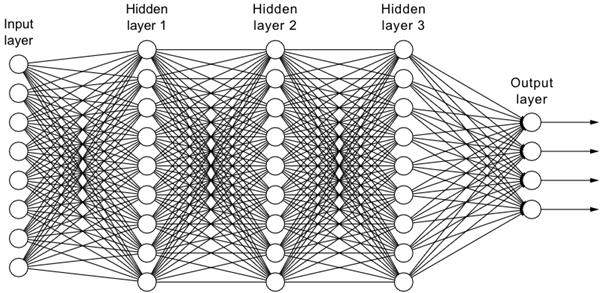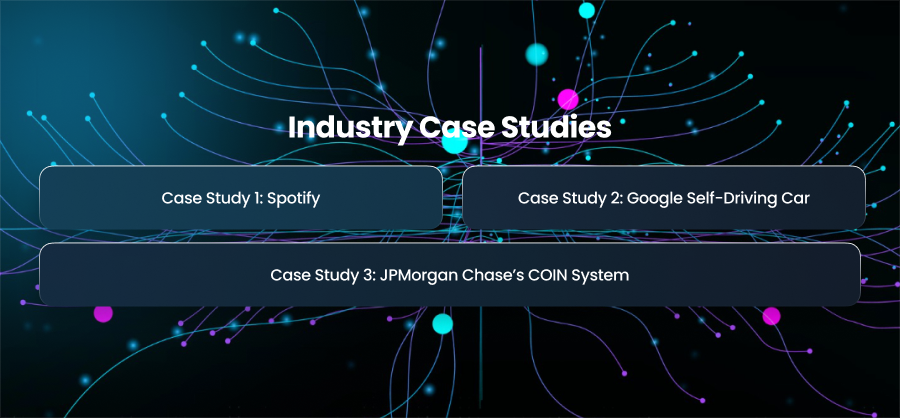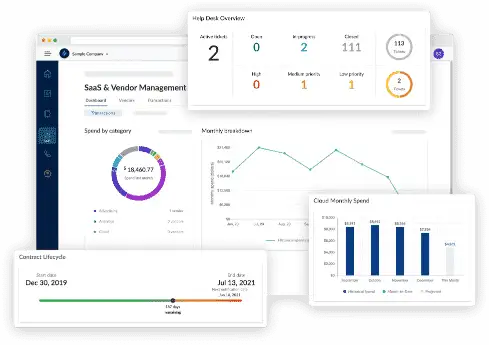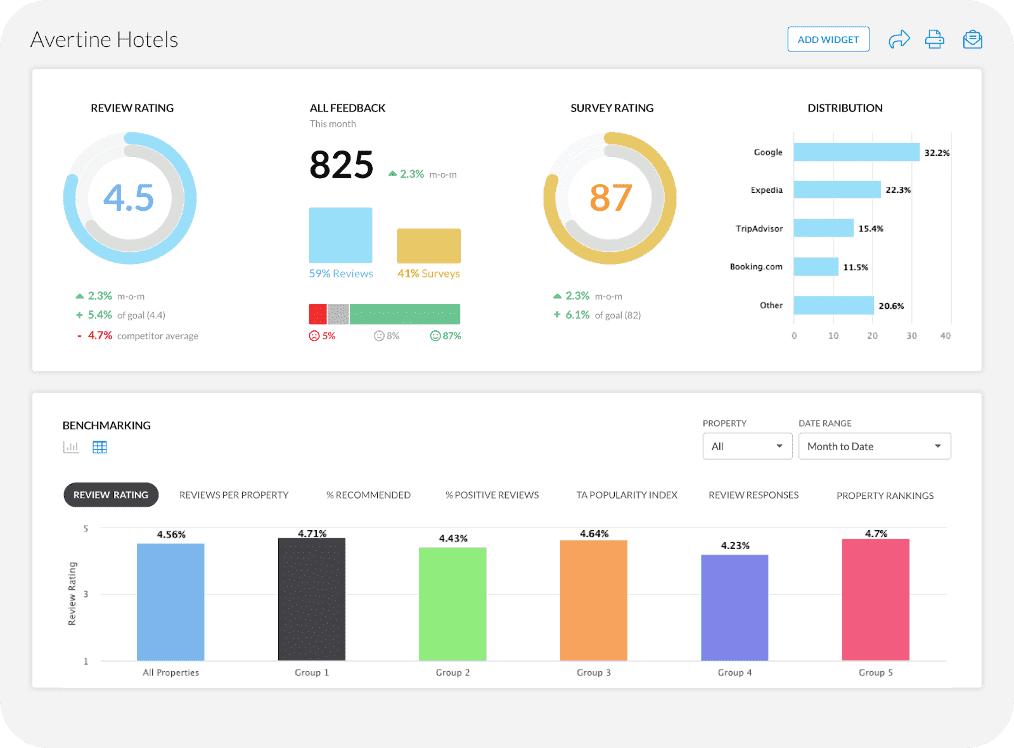Gone are the days when neural networks were just part of the academic curriculum. Nowadays, they are widely used in modern software development as we live in a data-driven world.
The global market for neural network software was $33.19 billion in 2024, and it is expected to rise to $41.47 billion by 2025. More astonishingly, the market for neural networks in software development is expected to reach a CAGR of 26.5%.
Therefore, with these expected numbers, it is safe to say that neural networks are going to play a vital role in the modern software development industry.
Currently, neural network is the most significant branch of artificial intelligence which is increasingly being integrated into modern software solutions. From recommendation systems and voice assistants to predictive analytics and fraud detection systems, neural networks are reshaping the tech industry. However, there are many challenges on the way.
So keeping the stature of neural networks in mind, CodingCops decided to dedicate today’s blog to the role of neural networks in modern software development which will encompass the benefits, challenges, and future of this technology in the industry.
So, let’s begin!
Neural Network – A Basic Understanding
Firstly, let’s address the commonly asked question, “What’s a neural network?”.

Basically, a neural network is a model of machine learning inspired by the human brain. Its structure is composed of interconnected nodes, known as neurons, that process data. Each node is responsible for processing inputs and passing output to the next layer. Moreover, each network has hidden layers and output layers.
Key Points of Neural Networks
- Inspired by the human brain (mimics the human brain structure and functionality)
- Interconnected nodes process data
- Consists of input, output, and hidden layers
- Each connection between nodes has associated weights
Types of Neural Networks
Neural networks have various types and each type has a distinct purpose. Moreover, all neural networks have their strengths and weaknesses and you have to decide which type suits your requirements.
- Convolutional Neural Network (CNN)
- Recurrent Neural Network (RNN)
- Feedforward Neural Network
- Generative Adversarial Network (GAN)
Role of Neural Networks in Software Development
Buckle up guys, as the best part is about to start.
Now that you have understood the basic things about neural networks, it’s time to understand their role in software development. Using neural networks in software development enables applications to learn, make predictions, and automate tasks that are nearly impossible for humans.
Speech Recognition

Neural networks play an important role in speech recognition as they can be trained to recognize voice data patterns. Therefore, using neural networks can easily assess human speech regardless of varying language, pitch, tone, accent, etc.
Companies use neural networks to develop transcription software and virtual assistants proving how valuable this technology is for software development.
Real-time Example of Speech Recognition
Google Assistant and Amazon’s Alexa are a great example of speech recognition.
Face Detection

Another area of software development that uses neural networks is the face detection. Developers train a neural network to detect the facial features of a human, such as nose, eyes, and mouth.
Developing software with facial recognition systems becomes easier with neural networks as they use the pattern recognition technique.
Real-time Example of Face Detection
Many schools, educational institutions, and corporate offices have face-detection attendance systems.
Predictive Forecasting

One can train the neural networks to make predictions. Neural networks are trained on historical data to make predictions regarding trends, fraud detection, and optimizing processes.
Real-time Example of Predictive Forecasting
A self-driving car anticipates potential threats and hazards to make immediate decisions.
Building Chatbots

Chatbots have become a basic necessity for all systems. In fact, businesses now demand chatbots in their applications to facilitate users/clients at the earliest. Chatbots are built using neural networks as it empower a chatbot to behave and communicate like humans.
Real-time Example of Chatbots
Amazon’s Alexa is the best example of a chatbot that assists users in many ways.
Fraud Detection Systems

Hackers, intruders, and penetrators are always looking for ways to commit financial fraud. To cope with such potential threats, developers need to develop fraud detection systems using neural networks.
Neural networks provide real-time fraud analysis helping handle potential frauds. Furthermore, such systems are applied in data mining to develop systems that help mitigate fraud.
Real-time Example of Fraud Detection System
An e-commerce site with a fraud detection system can flag a transaction as fraudulent if a customer’s card is used in two far-apart locations in a short time.
Recommendation Systems
Furthermore, with the help of neural networks, you can build recommendation systems that suggest products, content, or services to users based on their preferences and behaviors.
Real-time Example of Recommendation System
Netflix suggests movies and seasons based on your viewing history.
Benefits of Using Neural Networks in the Software Industry

The list of benefits of using neural networks in the software development industry is very long. However, we tried to write down the top perks so that you can get the most out of today’s topic.
Enhanced Accuracy and Precision
In software development, you come across tasks that require superior accuracy compared to the traditional methods. That’s where neural networks come into play. Neural networks are capable of learning complex, non-linear relationships in data, making image and speech recognition easier.
Hence, they provide more accurate predictions and promote better decision-making in various applications.
Automation of Complex Tasks
Secondly, incorporating neural networks in your software systems automates many of your complex tasks. Unlike traditional development where a developer has to write code for every task, neural networks learn from examples. In software development, it assists by speeding up the automation of tasks, such as testing, customer service, etc.
Adaptability and Learning Capability
Neural networks are capable of learning from the given data and adapting to new information. This improves their performance and efficiency over time.
Cost Reduction
Once you automate your tasks with neural networks, it improves efficiency and leads to significant cost savings.
Risk Mitigation
Another perk of neural networks is that they minimize the risks by providing accurate predictions leading to better decision making. Furthermore, they detect and prevent fraud, cyberattacks, and other security vulnerabilities.
Enhanced Decision-Making
Lastly, neural networks are capable of analyzing large datasets and identifying patterns. This enables them to deliver better insights and make more informed decisions. Additionally, they assist by predicting customer behavior, optimizing resource allocation, making strategies, and boosting overall business performance.
Neural Network Bottlenecks in Software Development
Despite several benefits, there are disadvantages and hurdles you will face in incorporating neural networks in software development.
- Training neural networks involves a huge investment as you have to have powerful GPUs and large datasets, which are expensive and take a huge time.
- While working with neural networks the process is very much dependent on data. Because neural networks need vast amounts of labeled data which must be of high quality, and have ample quantity.
- While integrating neural networks into your systems, you may face a talent gap. There is a shortage of professionals with the right skills to design, train, and deploy neural networks efficiently and effectively.
- If you are on a mission to integrate neural networks in old existing systems, this might not be an easy task. The reason is, the existing systems are not built to accommodate AI components.
How Developers Can Handle Neural Network Bottlenecks?
You must have heard that there’s light at the end of the tunnel. Similarly professional developers have a solution for the given challenges of neural networks. Let’s find out what they have!
Pre-trained Models: Developers opt for platforms that offer ready-made models for tasks like sentiment analysis and image classification. For this, one can choose Hugging Face and TensorFlow to get the job rightly done.
AutoML Tools: Google’s AutoML or Microsoft Azure ML simplify model training for non-experts.
Edge AI Solutions: Using edge AI solutions, neural networks are run on low-power devices rather than depending solely on cloud platforms.
Why Neural Networks Are Better than Traditional Algorithms?
To understand this query, let’s go through a short comparison.
| Feature | Neural Networks | Traditional Algorithms |
| Learning | Neural network models are capable of self-learning from the given data. | Rule-based or manually designed |
| Flexibility | Highly flexible; adapts to changes easily. | Very less flexible compared to neural networks |
| Accuracy with Big Data | Often higher | Depends on algorithm |
| Interpretability | Low | High |
| Execution Speed | Slower | Faster |
This comparison will make you understand why neural networks are the preferred choice for modern software development.
Industry Case Studies

Case Study 1: Spotify
In the first place, we will discuss how Spotify utilizes neural networks.
Spotify is a digital music and video streaming platform with millions of users around the world using neural networks to analyze user behavior and generate personalized recommendations for users. Their AI-driven approach brings content according to the context, time of day, listening history, and other patterns that users with similar interests enjoy.
Thus, users enjoy better recommendations based on their listening patterns.
Case Study 2: Google Self-Driving Car
Google’s self-driving car division, Waymo uses deep learning algorithms into their autonomous systems to make self-driving cars more efficient at analyzing and reacting to the surrounding happenings.
Case Study 3: JPMorgan Chase’s COIN System
JPMorgan Chase’s COIN System uses transformer-based conversational AI to analyze commercial loan agreements in a quick time. This saves a huge time of for lawyers. Moreover, using models like BERT and GPT, ensures contextual understanding, intent recognition, and natural dialogue in customer service.
Final Words
In conclusion to this blog, we tried to stick with the basic neural network concepts to help you understand the role of neural networks in software engineering. Artificial intelligence and machine learning are the cornerstones of software development and neural network is just a subset of both technologies.
You can integrate neural network models in your software projects to enhance accuracy and precision, make complex tasks easier, and achieve better decision-making. Furthermore, it reduces huge costs and is highly scalable and adaptive.



















